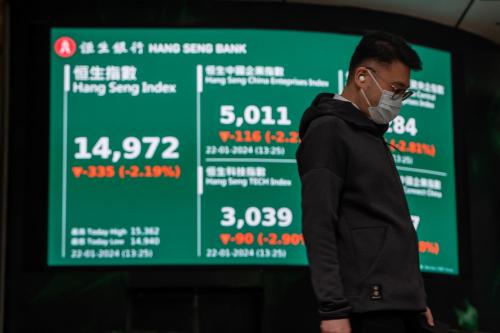Countries export similar products at very different prices. Tomatoes are an interesting example. While the unit value of exported Albanian tomatoes is around $0.50 per kilogram, nearby Italy exports tomatoes at $2.40 per kilogram. The unit value of Albanian tomatoes is five times less than the price of Italian ones!
What explains these price gaps? Differences in perceived or actual product quality, whether the product is sold to a final user or an intermediate processor and the affluence of the destination market all likely play a role. Going back to the example of tomatoes, Albanian tomatoes exported to Serbia for further processing into canned tomato sauce are likely to sell at a lower price than high-grade Italian salad tomatoes sold to the United Kingdom.
The existence of these price gaps points to an opportunity: exporting better. Increasing exports in existing product categories, or diversifying into new categories, requires significant investment in production facilities and building new relationships with customers in foreign markets. While tackling these challenges is crucial, overcoming these obstacles may take a long time and come at a significant expense. Exporters should therefore also consider leveraging a potentially more immediate margin to increase their revenues: upgrading the quality of their export basket and selling them at a higher price.
How can exporters unlock higher prices? Some price differences will be difficult to overcome. For some sectors, a general lack of confidence in the quality of products from certain countries will require long-lasting interventions to change consumer perceptions. Infrastructure that lowers transportation costs and expands access to more upmarket customers can take many years to develop. But, in the meantime, a range of other factors can be tackled through concerted private sector and government action.
First, production processes and facilities should upgrade and meet the standards of upmarket customers. Producers need to meet the quality, environmental, safety and other standards expected—and in many cases legally required—by advanced markets. Within product categories, higher-value varieties could be explored. Moreover, small producers could organize into cooperatives or develop aggregators to offer the scale and the supply security that large international commercial buyers are looking for. Going back to the tomato market, upgrades such as greenhouses allow entrepreneurs to sell produce out of season, when prices are higher, and in a more controlled environment, assuring quality. Refrigeration technology enables reach to more distant customers.
Government can play a role by bridging information asymmetries through trainings and awareness campaigns, nudging the private sector into action. To overcome liquidity constraints faced by companies that are fundamentally creditworthy, the public sector can set up credit lines and credit guarantee windows—though these interventions need to be accompanied with an effective communication strategy to encourage businesses to apply, bureaucracy needs to be kept to a minimum and all schemes need to be subject to regular rigorous cost-benefit impact evaluation.
Second, a sound quality certification infrastructure is needed to demonstrate that products meet the standards required by advanced markets. For example, the lack of domestic product certification infrastructure in Kosovo requires producers to pay four times more to go abroad and receive basic certification for EU trade from an international accreditation facility—deterring many Kosovar producers from seeking certification in the first place. Yet, formal certification is a prerequisite for gaining access to advanced markets. To facilitate this process, governments need to transpose internationally recognized product certification standards into national legislation and put in place domestic laboratories to credibly test that products meet these standards. Businesses need to actively seek both national and international certifications.
Third, exporters need to develop their branding and processing capability. For example, Italy charges a 50 percent premium for bottling olive oil produced in Greece and exporting it from Italy. Beyond formal certification, countries, value chains and individual exporters need to actively seek to build their brand and gain the trust of customers abroad. Where products are sold through intermediaries, exporters need to venture out, develop in-country processing and their own sales channels through which they can sell under their own label to end users. This requires that firms adopt their packaging and labeling to the requirements of foreign markets.
Fourth, exporting relationships with more advanced markets need to be more actively developed. More advanced markets offer customers with higher incomes and greater willingness to pay. The private sector needs to actively seek to sell to these higher-income countries. Governments need to negotiate trade agreements that give exporters better access to these markets. Through trade fairs and missions, government can help businesses to establish trading connections. Firms benefiting from such trade facilitation significantly increase profits by upgrading their production to take advantage of new trading connections.
Upgrading existing exports may not come first to mind when discussing how to increase trade, but exporters neglect this important margin of trade at their own peril. Down the road, as exporters unlock higher prices, the lure of higher profits can induce other domestic producers to venture out and become exporters. The additional profits ease the financing constraints faced by entrepreneurs, enabling investment, scaling up, and further upgrading of production. Even a small increase in export prices may indeed have a great impact along the whole domestic value chain.









Commentary
Exporting better
May 15, 2019